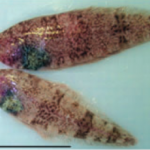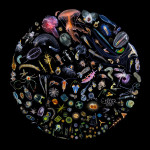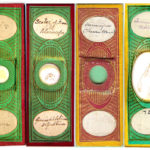
 A three-week Canadian expedition recently finished that documented a protected area near Sable Island referred to as the Gully. The Gully is the largest submarine canyon in eastern North America, approximately the size of the Grand Canyon. The submersible expedition can be classified as a success obtaining 3,000 digital images, hours of video footage, and multiple samples. One of the goals of the expedition was to increase knowledge on the distribution of deep-water corals. The team discovered a new species of bubblegum coral, a single-cell organism the size of a grapefruit (Xenophyophore), and a colony of Lophelia (stony coral).
A three-week Canadian expedition recently finished that documented a protected area near Sable Island referred to as the Gully. The Gully is the largest submarine canyon in eastern North America, approximately the size of the Grand Canyon. The submersible expedition can be classified as a success obtaining 3,000 digital images, hours of video footage, and multiple samples. One of the goals of the expedition was to increase knowledge on the distribution of deep-water corals. The team discovered a new species of bubblegum coral, a single-cell organism the size of a grapefruit (Xenophyophore), and a colony of Lophelia (stony coral).
“We really didn’t know what we would find when we went out there because it was all new to us,” Ellen Kenchington, a research scientist at the Bedford Institute of Oceanography in Halifax, N.S. told CTV’s Canada AM. “Previously we had been working at depths to about 700 metres. With the new technology that we had…we could go two and a half kilometres. So it was fantastic.”

Image Credits and Legends in order of appearance:
Map from the Sable Island Green Horse Society
A ‘Dumbo octopus’ found off the coast of eastern Canada from CTV.ca.
Soft coral (yellow) from Nova Scotia News.
A carnivorous sponge from the genus Chondrocladia. from Nova Scotia News.






A single-celled organism the size of a grapefruit?! Wow. Is there a picture of it? Or is that the critter in the last (uncredited) photo?
The last image is a carnivorous sponge. The credits and figure captions appear at the end of the post. A Xenophyophore, a single-celled protist, can be seen at http://www.oceanexplorer.noaa.gov/Explorations/05lostcity/logs/july27/media/xeno2.html
I thought all sponges are predators. They take seawater inside their body through many microscopic channels, filter it for food and gather everything into a wide chute and to the sea.
Most sponges are filter feeders as you mention. Collar cells phagocytize particles out of the water that enters through the canals.These cells have flagella that create the current and draw the particles into the cell. These particles can be any matter of materials in the water column. Carnivorous sponges on the other hand have modified spicules (shaped like hooks) that entrap small crustaceans and the such. Once things are caught in the hook, cells mobilize toward the prey and phagocytize it.
This is the way things should be, get off what we are on now